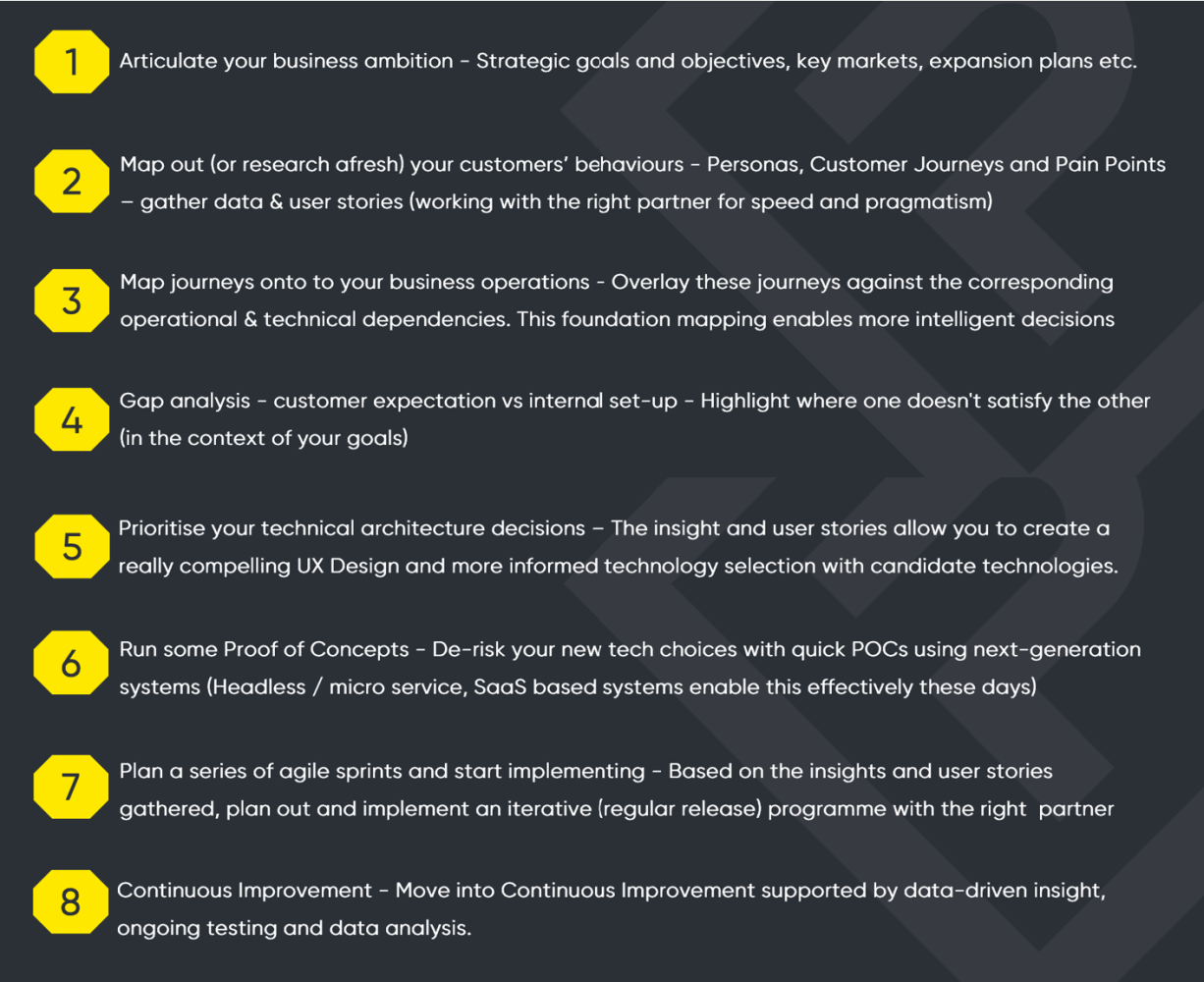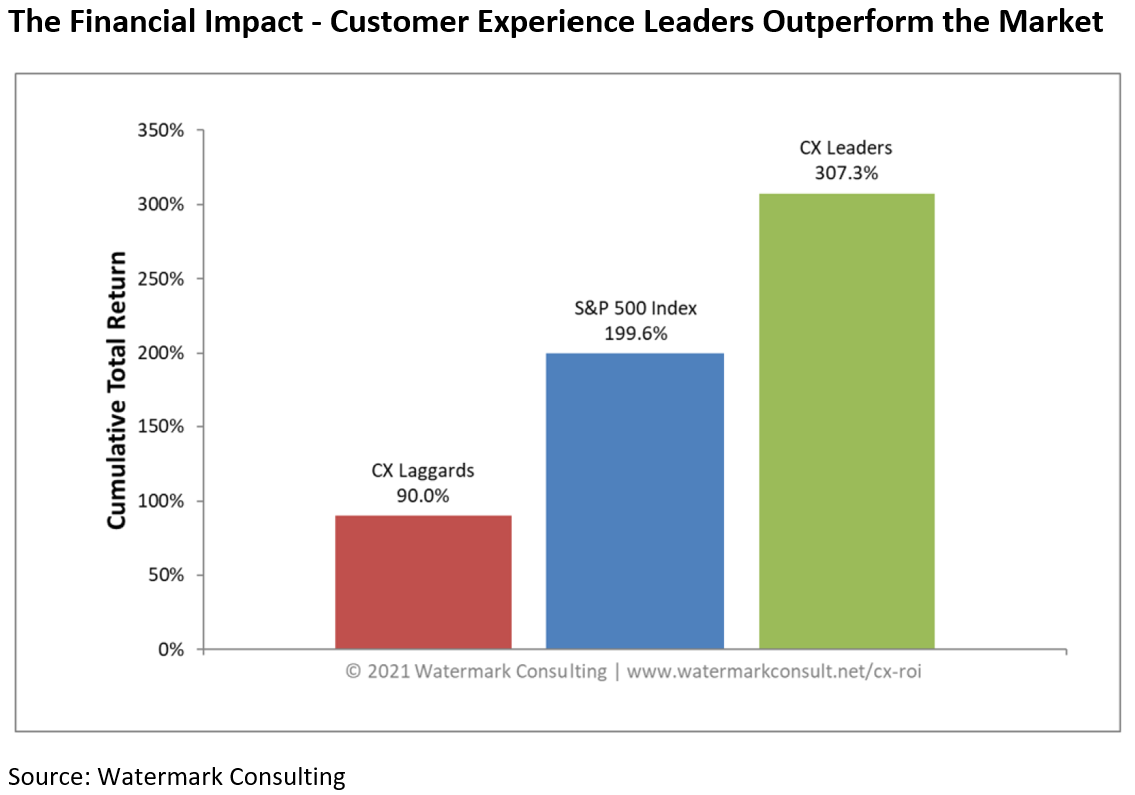How to rise above emotion in your next ecommerce or digital transformation
Think about your current digital or ecommerce landscape…. and now consider how it came to be….. as it is today.
I suspect it has been an evolution of systems, each introduced, extended, customised or upgraded based on the evolving thoughts and feelings of your various teams. Small evolutions are rarely emotive, but when it comes to making a transformation, we often see emotions running high because the proposed change is more significant, and it affects the whole business….typically it’s a mix of:
- Unhappy with the current technology, data silos, lack of agility or business outcomes
- Frustrated with constraints across ecommerce, website, CMS, PIM, OMS etc
- Hopeful and excited that introducing new systems will make everything better
Spinning in the dirt
These feelings can often leave you “spinning in the dirt” because the scale and variety of transformation options open to you is vast, so finding a starting point can be difficult. There will also be a plethora of vendors and “experts” throwing all sorts of answers at you – creating more noise. Added to this are the feelings of your colleagues in IT, operations, marketing and service – and maybe pressure from the Board – yet more noise! And all these feelings are feeding the bias and opinion that may be shaping so many decisions in your business. It’s all very emotional!
The right lens
The art of rising above all the noise is having the emotional intelligence to park these feelings for a moment. Allow yourself a pause, and establish a common frame of reference around which everyone in the business can coalesce – a roadmap you can all believe in.
To do this, you need a different lens on the problem. This will help you rise above the maelstrom of emotion. That lens (or frame of reference) is your Customer. Your Customer is the ultimate point of reference that everyone in your business recognises they have to serve – there is no better common denominator.
I will assume you are clear about your business goals, and that you understand enough about your business to assess your own internal readiness. These considerations are important, but you need the Customer dimension to build a foundation and complete the picture.
The customer dimension
Think about it… if you can park all the conversations about technology, systems, vendors, upgrades, and integrations and, just for a while, put the same intensity into understanding your customer – you will create a better outcome. This “understanding” is not just gathering NPS scores, satisfaction surveys or some web analytics (although they play a part) – I’m talking about researching the full offline/online customer journey (Awareness – Consideration – Decision etc), interaction points, moments of truth, motivators, path-to-purchase and pain points – in essence, why your customers behave the way they do – not just what they do. You need to get to behaviours because that’s what you actually want to influence, not “post-interaction” statistics. The insight will be current, relevant, and you can use it in two ways:
- To shape a compelling front-end user experience (UX) design that is genuinely informed by fact
- To highlight the correct technical prioritisations and operational changes needed to meet your customers’ expectations
8 steps to success
When we work with our clients they adopt this modern approach to execute their transformation, avoiding all the noise and emotion, to ensure a successful, customer-centred outcome (Note: it never starts with technology)…

Decisions, decisions!
Along this journey there are a lot of decisions, but how confident are you in those decisions? We all know that emotion is inevitable in any programme of change but when emotions (especially from those “loud voices” in your business) create bias and opinion in your decision-making, it can lead to poor business outcomes.
If you exist to serve and delight your customer (and by default create revenue and profit), ask yourself: Do you have current customer insight readily available, in a format that directly informs your digital decision-making? Are your decisions truly customer-evidenced? (By the way – customers, in this context, extends to understanding your internal users’ needs – their ability to work with any new technology needs equal attention).
If this all sounds a bit evangelical or overly hopeful, perhaps you have been seduced or overwhelmed by the technology vendors to the detriment of everything else. Granted, it’s hard to ignore the power and prevalence of tech vendor marketing , but remember – whilst they offer the technical solutions, it does not pay to become stuck in a technology tunnel. You will end up mired in discussions about website issues, data problems, integrations, ecommerce systems, CMS, PIM, CRM, ERP and all the surrounding systems. It’s important to care about these things, but if you only have this “inside-out” lens on the challenge, you get dragged into a swirling conversation around features, functions, security, scale and performance. It’s OK to go there, eventually – but just don’t start there. Start thinking “outside-in”.
The acid test
Once you have created that foundational current behavioural insight (which, with the right partner alongside, can be done with surprising speed), thereafter, only one question should permeate all your internal discussions….. “How will this [action] deliver or improve the experience our customers want, and align with our business ambition?”.
Imagine addressing your Board with a business case or budget request, and having a customer-evidenced substantiation behind every “ask” you make – would your case be more compelling? Companies that invest with this perspective perform better – with Customer Experience (CX) Leaders consistently outperforming the market and delivering a 3.4 times higher cumulative return than CX Laggards.

Does this apply to me?
There will be those who already feel some confidence in their approach and the decisions they are making. However strong those assumptions, it still pays to validate your thinking by sanity checking them against current customer evidence… things change, attitudes change, new channels and devices emerge all the time – so make sure your “well-thought-out” plans are also supported by current customer understanding. There is always a tension between the business-as-usual constraints you work with today and the ambition you are pursuing for the future, but that tension can be navigated and managed in a pragmatic way. You don’t have to deliver everything at once if you are intelligent in your approach and technology selections.
If your business is in the luxurious position of having no competitors or disruptors, you may succeed for a while…. but eventually, in an increasingly commoditised world, the one thing that will define your success or demise is the customer experience you deliver. If you are not in that luxurious position then, in fact, the customer experience you deliver right now (good or bad) is already your key differentiator, whether you acknowledge it or not. People vote with their feet; they behave the way they want, they jump between channels, and this is why any transformation or evolution of your current set-up has to start with that up-to-date customer understanding – rather than any knee-jerk leap straight into a technology selection that could lock you into more long-term rigidity.
In our experience, it pays to initially put aside the technology conversation (and especially any technology RFP process). Instead, start the whole process with that solid customer evidence discovery process, so you can build all your decisions, UX designs and operational or technology changes from an inarguable base.
Customer evidence is truly empowering. It will raise you above all the emotion and garner better internal stakeholder support. You will feel calmer, more reassured, more confident in your decision-making and be better equipped to drive the business forward.